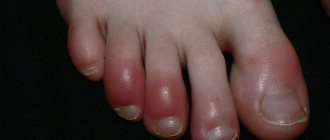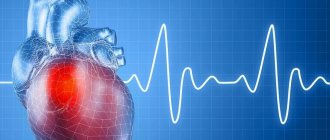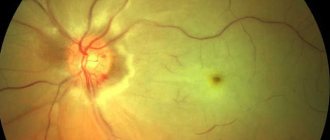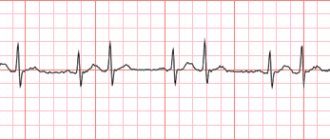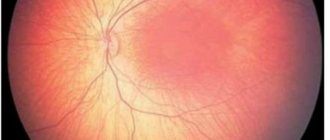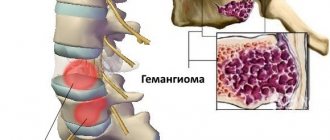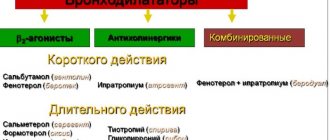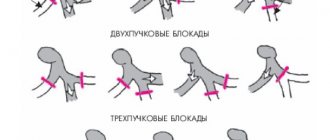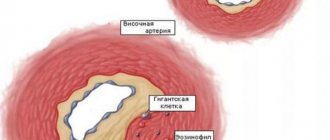Vascular diseases of the lower extremities can strike at any age. Their variety is very wide, they are characterized by different symptoms and have individual treatment characteristics. Each disease can lead to severe complications and consequences. To prevent this from happening, you need to familiarize yourself in as much detail as possible with each of the possible disturbances in the functioning of the vascular system. And most importantly, you need to figure out what to do if the blood vessels in your legs hurt.
Symptoms of vascular diseases of the legs, photos and treatment methods - all the most important things are collected in this article.
Main vascular diseases of the legs: symptoms and brief description
Symptoms of venous leg disease can appear at a very early stage. If they are detected in time and immediately consult a phlebologist, you can not only stop the progression of the disease, but also completely get rid of it.
So, what are the types of vascular diseases in the legs?
Atherosclerosis
Atherosclerosis is a disease of the arteries of a systemic nature, which is accompanied by cholesterol deposits and plaques attached to the walls of blood vessels. This leads to disruption of the nutrition of the blood supply and a general malfunction of the circulatory system.
Ultimately, the accumulated deposits can lead to complete blockage of blood vessels, which is often fatal.
Men are more susceptible to atherosclerosis. Women develop this disease much less frequently. What are the reasons?
- In poor nutrition. Large consumption of fatty, fried, smoked foods, fast food, alcoholic and carbonated drinks lead to the appearance of cholesterol plaques.
- Stress . Negative emotions, constant nervous shock and stress lead to atherosclerosis.
- Smoking . Nicotine and tar have an extremely negative effect on the vascular system.
- Diabetes. One of the most significant causes of atherosclerosis.
The most characteristic symptom of atherosclerosis is lameness. When walking, the patient feels severe pain in the calf muscle, thigh and hip joint. The pain is temporary and gradually subsides. However, after some time it returns again.
Atherosclerosis has a number of other symptoms:
- leg cramps at night;
- feeling of numbness in the feet and toes;
- rapid fatigue of the legs during short-term walking;
- pallor of the skin, maybe with a bluish tint.
Phlebeurysm
Unlike atherosclerosis, a purely male disease, varicose veins mainly affect beautiful girls. The legs quickly become tired, swelling, heaviness and pain are noted, and vascular webs of a purple hue begin to appear. To complete the image, swollen veins, reddish or bluish in color, are added that stand out brightly on the surface of the skin.
In 80% of cases, varicose veins appear during pregnancy or after childbirth. Hormonal imbalance leaves a special impact on the vascular system . Also, varicose veins can be caused by prolonged exposure to a static position (standing or sitting, especially in a cross-legged position), or prolonged wearing of high-heeled shoes.
Veins and vessels affected by varicose veins on the legs, photo:
Beginning varicose veins, stage 1-2
Blockage of deep veins
Blockage of deep veins has the medical term phlebothrombosis. Pathology is caused by:
- increased blood clotting;
- violation of the structure of the walls of blood vessels;
- slow blood flow.
Phlebothrombosis has a number of characteristic symptoms:
- pain in the legs, a feeling of discomfort, bloating and rapid fatigue (quickly goes away when lying down and raising the legs above head level);
- swelling of the legs;
- a leg affected by phlebothrombosis feels much colder to the touch than a healthy leg.
Vascular obstruction
Vascular obstruction is called occlusion. In essence, it is an embolism of peripheral vessels, their spasm and an extremely acute circulatory disorder. The danger of occlusion lies in the high probability of complete loss of sensation in the legs and cessation of their vital activities.
Symptoms of the disease:
- painful sensations in the leg;
- lack of pulsation in the leg;
- ill health, pale skin;
- in later stages of the disease: complete lack of sensation in the leg, paralysis;
- a characteristic marble “pattern” appears on the leg;
- the leg affected by the occlusion becomes cold.
If medical care is not provided on time, the result of the disease is gangrene.
Saphenous vein thrombosis
A disease in which bloody clots or thrombi form in the lumen of the saphenous veins. The saphenous veins are located quite close to the surface of the skin, so the pathology has pronounced manifestations - inflammation, redness, swelling and pain.
When a blood clot forms in the veins, compactions and nodules are observed. The disease is also accompanied by an increase in temperature and a change in skin color in the problem area (it becomes too pale compared to the general shade of the skin of the leg).
Endarteritis
This pathology is popularly called smokers' disease. Scientists have been able to prove that under the influence of nicotine and tar contained in cigarettes, the vascular lumens narrow and the blood supply to tissues is significantly impaired.
“Occupational” vascular disease of smokers is accompanied by the following symptoms:
- pain in the legs when walking, worsening when walking faster or when starting to run;
- swelling of the legs;
- tingling feeling in the legs;
- the appearance of fatigue in the legs even with minimal loads;
- lameness not associated with possible leg injuries;
- the occurrence of trophic ulcers;
- ill health pallor of legs;
- complete loss of sensation in the legs.
Dangerous symptoms
Pain in the vessels of the lower extremities differs from muscle pain in its consistency. If the muscles become overworked or there is a lack of lactic acid, the body corrects the situation, the discomfort disappears and everything becomes as before.
Pain syndrome caused by veins is constantly progressive. In the initial stages of the formation of vascular diseases, the sensations experienced can hardly be called pain. At first, there is a feeling of fatigue or heaviness, swelling appears and it seems as if the legs have taken on water.
Important. Often, patients interpret the initial stages of the pathology, accompanied by fatigue and heaviness in the legs, as a consequence of a busy working day and do not attach importance to these symptoms!
Leg pain is a sure sign of illness
After some time, when the destructive processes intensify, the unpleasant sensations are gradually replaced by dull or nagging pain, and a feeling of tension appears in the popliteal region. Often sick people complain of tingling, itching or burning coming from inside.
Night pains begin to appear more and more often, a person sleeps poorly trying to find the optimal position, and in the morning the legs swell and tingling is felt in them. An illness is indicated if, after a long period of sitting or being in a horizontal state, it is difficult for a person to rise to his feet, they do not obey well and become as if weak.
This can be called a terminal moment, after which it is extremely undesirable to postpone a visit to the doctor and engage in self-relief of the pain syndrome. If treatment is not started, then in the near future the disease will worsen (sharp pain in the legs will appear) and will begin to manifest itself externally, while the inflamed veins will be visible visually, which is bad not only for health, but also from an aesthetic point of view.
You should always remember - the sooner the disease is identified, diagnosed and adequate treatment is started, the more optimistic the prognosis for improvement or recovery will be. The cost of neglecting your own health can be much higher than a few hours spent on a visit to a medical facility.
Pay attention to the photo of an advanced disease, which makes it clear what consequences are possible if treatment is not carried out. This is emphasized because most people come for help when the disease is in the advanced stages, and moderate discomfort is replaced by unbearable pain.
Obliterating endarteritis
Treatment methods
Can blood vessels in the legs hurt? They can if they have one of the above diseases. If the vessels in the legs hurt, treatment should be carried out by a phlebologist.
It is very important to entrust the health of your feet to an experienced specialist and not self-medicate!
Each vascular disease requires an individual approach to treatment:
- Atherosclerosis . The disease is treated with medications and has very good results, but only if treatment is started on time. It is also important to strengthen drug therapy with vitamins E, C, PP, and unsaturated fatty acids. If the disease is advanced, the problem is eliminated surgically.
- Varicose veins At the initial stage, gels and creams (Troxevasin, Sophia), tablets for varicose veins (Phlebodia, Detralex) will help cope with the problem. If the disease progresses, sclerotherapy is performed - the affected vessels are “glued together” using a sclerosant substance through intravenous injections. In extremely severe cases, complete surgical excision of the vein may be necessary.
- Blockage of deep veins. At the initial stage, you can improve your well-being with the help of a medicinal set of gels and tablets that improve the functioning of veins. If gentle treatment does not help, the problem is eliminated surgically.
- Vascular obstruction. With this disease, the patient is immediately admitted to a hospital. Self-medication at home is strictly prohibited! The patient is given aggressive drug therapy. If the condition worsens, a thrombectomy is performed (removal of the cause of blockage of blood vessels).
- Thrombosis of saphenous veins. To eliminate blood clots, you can use medications aimed at liquefying the clots. If this technique does not help, the blood clots are removed in the surgical office.
- Endarteritis . The first stage of treatment is a powerful complex of medications (antibiotics, antispasmodics, vitamins, anticoagulants), electrophoresis, diathermy. Surgical intervention is required only at the ulcerative-necrotic stage of the disease.
Prevention methods and general recommendations
As you know, a disease is easier to prevent than to treat. In order to protect your health from vascular diseases, you can follow simple recommendations for preventive measures:
- Proper nutrition , more fruits and vegetables, less fatty and fried foods.
- Playing sports , at least in minimal quantities. For example, fitness and home exercises. It is very useful to lie down on the bed at the end of the working day, raise your legs above your head and lean them on the wall. This will improve blood circulation, relieve heaviness and swelling of the legs, and normalize blood flow.
- Contrast showers have a very beneficial effect on the vascular system, help strengthen veins and blood vessels, and protect against possible diseases.
- Avoid standing for long periods of time.
- Use folk remedies to maintain optimal vascular function . You can also consult with a phlebologist about maintenance drug therapy for preventive purposes.
Atherosclerosis as a cause of leg pain
Atherosclerosis is a complex and dangerous disease caused by the formation of cholesterol plaques on the vascular walls. Most often, the cause of this disease is an unbalanced diet and eating “harmful” foods – those that increase the level of “bad” cholesterol. The development of atherosclerosis can be triggered by excess weight, diabetes mellitus, and hereditary predisposition. Symptoms of the disease include poor circulation in the lower extremities, heart problems, numbness in the legs, and chronic fatigue. When the legs hurt as a result of atherosclerosis, the patient, after diagnosis, is prescribed complex treatment:
- Taking drugs that reduce blood clotting - anticoagulants.
- Physiotherapeutic procedures affecting blood vessels.
- Correction of nutrition, lifestyle changes, ban on alcohol and smoking.
- In extremely severe cases, surgery is prescribed.
Surgeries for atherosclerosis are recommended to be performed when the vascular lumen is severely narrowed. If the vessels in the legs hurt, the doctor prescribes a comprehensive diagnosis to determine the stage of atherosclerosis and assess the condition of the vascular walls and lumens. Shunting is used as a surgical treatment method - the shunt opens and increases the lumen in the vessel to restore blood circulation.
Atherosclerosis is the first sign of coronary heart disease - insufficient oxygen supply to the heart muscle through the coronary arteries. At the first symptoms of the disease, you must immediately consult a specialist, since IHD (coronary heart disease) can cause sudden death in the acute course of the disease.
Vascular pain with phlebitis and thrombophlebitis
Phlebitis is characterized by inflammation of the vascular walls, and thrombophlebitis is characterized by inflammatory processes in the veins and increased blood viscosity. The main symptoms are visible upon visual examination: swollen veins, swelling, discoloration of the skin on the affected areas of the lower extremities. A person feels discomfort and pain in the legs, which become very tired even with normal walking. Inflammation of blood vessels and veins can be caused by infectious diseases or taking certain medications. For inflammatory vascular diseases, traditional methods of treatment are out of the question. Urgent diagnosis is necessary so that the doctor can prescribe effective treatment:
- Taking anti-inflammatory drugs - tablets, injections.
- Drug therapy using anticoagulants.
- Performing an operation with complete closure of the venous lumen.
Phlebitis and thrombophlebitis are especially dangerous because during their development inflammatory processes occur in the tissues. In addition, the blood clot can break off and be fatal.
Vascular diseases of the neck and head
They are often encountered by people whose work takes place within the walls of an office at a computer - they are forced to remain in a half-bent position for a long time, and do not always remember the need for periodic warm-up and rest.
Stenosis is the most common vascular disease of the brain and neck. This name was given to a pathological condition associated with narrowing of the arteries and their complete blockage due to an increase in the number of plaques. As they grow, they are able to break off and “travel” through the bloodstream, obstructing it.
This disease is insidious in that at the initial stage the patient may not experience any symptoms - often the problem becomes clear when it is already too late. Complications of stenosis are: strokes and heart attacks.
Symptoms of pathology of the cervical and cerebral vessels associated with stenosis are as follows:
- movement disorders;
- memory impairment;
- emotional changes;
- dizziness, pain;
- vomit;
- the appearance of “flies” before the eyes;
- darkening of the eyes, the appearance of a veil;
- noise in ears;
- weakness in the limbs.
These phenomena do not necessarily indicate stenosis, but serve as a good reason to consult a doctor and undergo an examination.
This disease of the cervical and head vessels can take on an abnormal, extremely dangerous form, which is also called occlusion of the carotid arteries. This disease is also called carotid.
People who abuse alcohol, smokers, diabetics, hypertensive patients, those who are obese and those who eat too fatty foods are susceptible to stenosis.
Therapy is based on taking medications, in the presence of the main provoking ailment, designed to fight it. Surgery is often required:
- removal of a problematic blood clot;
- bypass;
- placement of an expander stent inside the vessels.
Additionally, the patient will have to change their usual lifestyle - switch to a healthy diet, start playing sports, get plenty of rest and avoid stress. The same actions will be required for people who want to protect themselves from such problems.
More about stenosis
Complete obliteration of blood vessels
Endarteritis is characterized by a negative change in the structure of the vascular walls. As a result, blood circulation and blood flow are disrupted, and necrosis (necrosis) of tissues deprived of nutrition occurs. In addition to pain, the patient experiences swelling and tingling in the lower extremities, the skin in the affected area becomes dry and pale, and trophic ulcers may develop. It is difficult for the patient to fully stand on his foot, which leads to lameness and fatigue with minimal physical exertion.
Factors that provoke the development of pathology include autoimmune diseases, smoking and systemic blood diseases. Endarteritis may occur due to infections and previous operations, as well as the patient’s hereditary predisposition.
Treatment of this disease includes the following measures:
- Taking medications that thin the blood.
- Prescription of anti-inflammatory drugs.
- Eliminating the possibility of hypothermia of the lower extremities.
- Improving blood circulation by reducing blood clotting.
- Surgery for appropriate indications.
The diagnosis must be carried out by a specialist. Traditional medicine can only be used to temporarily improve the patient’s condition. The most dangerous thing is that with endarteritis, the vessels are severely damaged, and it is almost impossible to restore their structure completely.
Phlebeurysm
This is a fairly common disease, most often observed in women. The physiological structure of the veins is such that blood rises to the heart through the venous valves. If their work is incorrect, circulatory problems occur, blood stagnates in the veins, accumulates in the most affected areas, the vessel stretches, becomes thinner and bursts. Varicose veins are observed with excess weight, taking hormonal drugs, decreased venous tone, and significant physical activity on the lower extremities. Varicose veins cause severe discomfort and pain in the legs. Complex treatment of varicose veins consists of the following measures:
- Wearing compression garments reduces the load on the lower extremities and protects the veins from further stretching.
- The use of non-steroidal anti-inflammatory drugs for external action - ointments and gels that relieve swelling.
- Prescription of phlebotonics and anticoagulants. These drugs strengthen the venous walls and reduce blood clotting.
- Massotherapy. Professionally performed procedures stimulate blood circulation and relieve pain.
- Surgical intervention. Depending on the stage of varicose veins, the doctor may recommend sclerotherapy, phlebectomy, ablation, or laser irradiation.
How is the treatment carried out?
The therapeutic regimen is determined by the doctor individually, depending on the type and severity of the disease. Self-medication is prohibited. For hemorrhoids, it is recommended to use suppositories and ointments: “Relief”, “Proctosan”, “Ultraproct”, “Proctosedyl”. Varicose vascular diseases are cured with drugs to improve blood flow and strengthen the walls of blood vessels. Medications such as Phlebodia, Venoruton, Vasoket, and Detralex are prescribed. For the treatment of hypertension, medications from several pharmaceutical groups are recommended - beta blockers, diuretics, renin inhibitors, calcium channel blockers. For neurocirculatory dystonia, sedatives and adherence to a daily routine and diet are prescribed. In other cases, hospital treatment and surgery are required.
The word of traditional medicine
If the patient decides to use non-traditional treatment for diseased veins and blood vessels in the legs, it is important to understand that folk compositions help improve the patient’s condition and temporarily eliminate the symptoms of the disease. But it is imperative to consult a doctor. When treating sore legs, you can use the following folk recipes:
- To cleanse blood vessels, take a lemon-garlic mixture. Grind 4 lemons and 4 heads of garlic, mix, pour the resulting mixture with 2.5 liters of cold boiled water. Leave for 3 days, filter and drink 100 grams in the middle of the day. Treatment lasts six months.
- Fresh coltsfoot leaves help with severe pain and fatigue in the legs. They are used as a bandage. Several sheets are applied to the affected area, wrapped with a bandage or gauze and a kind of compress is left overnight. Coltsfoot can be replaced with white cabbage.
- In case of varicose veins, you can use dandelion root. The fresh root is dried and eaten every day. Horse chestnut tincture gives good results. The fruits (50 grams) are poured with vodka (0.5 liters) and left to infuse for two weeks. Take 30–40 drops per day orally.
- Herbal decoction. Prepared from chamomile flowers, yarrow, immortelle, birch buds - 100 grams of each herb. Take 1 tsp. mixture, pour 500 ml of boiling water, filter after 15 minutes, add honey (2 tablespoons). The resulting liquid is divided equally and drunk before bed and in the morning.
- For severe swelling of the lower extremities, you can use a decoction of four hundred grams of white radish and one liter of water with the addition of a teaspoon of salt. The prepared mixture is boiled for ten minutes, cooled and taken orally throughout the day.
Traditional medicine is recommended to be used in combination with drug treatment and physiotherapeutic procedures. It is important to eliminate not the symptoms, but the causes of such an unpleasant phenomenon as joint pain.
By combining effective medications with medicinal compounds, you can quickly cope with the disease, because legs can hurt in both elderly and young people. In order to avoid the need to resort to long-term treatment, it is worth adhering to measures to prevent vascular diseases - a proper diet, leading an active lifestyle, playing sports, wearing comfortable shoes, and getting the required amount of vitamins. Taking care of your own health should come first, and then the question of why your legs hurt won’t have to be asked at a doctor’s appointment.
Kabardino-Balkarian State University named after. HM. Berbekova, Faculty of Medicine (KBSU)
Level of education – Specialist
State educational institution "Institute for Advanced Medical Studies" of the Ministry of Health and Social Development of Chuvashia
Today, vascular diseases of the legs occur quite often in patients. These include diseases that disrupt the functioning of the arteries, capillaries and vessels of the lower extremities. The frequent manifestation of such ailments is explained by both hereditary factors and the lifestyle of modern people. It is the second reason that is most common in the modern world, since a person has begun to move much less, all movements are replaced by modern modernized technology. In addition, more and more products that negatively affect the body are appearing in stores.
Principles of treatment
For vascular pathologies, timely treatment is important, since if the disease is severely advanced, therapy may not bring the expected effect and there are cases where the disease ended in amputation. Many people make the mistake of deciding on their own how to relieve leg pain, relying on the advice of friends, literature and other sources.
But such an approach is impractical and is fraught with serious complications. Treatment must be carried out under the supervision of a phlebologist.
As a rule, a whole range of therapeutic measures is prescribed to obtain the greatest effect, among which it is worth highlighting the following:
- adhere to certain nutritional rules;
- take prescribed tablets and apply ointments and creams to painful areas;
- undergo local therapy;
- wear special compression clothing;
- do therapeutic exercises;
- use non-traditional methods of treatment;
- be treated with surgery.
Venotonic gel – Troxevasin
A few words about nutrition
Proper nutrition is not only an excellent prevention of many diseases. Healthy food significantly speeds up the healing process by removing many negative factors associated with an unbalanced diet: weight is normalized, the content of undesirable substances is reduced, which reduces stress and strengthens blood vessels. Table 2 lists healthy foods and those that should be avoided.
Table 2. Nutritional features
| Unwanted Products | Healthy foods |
Fatty foods are prohibited |
Plant foods are very healthy |
It is very important that the daily diet is enriched with fortified foods (A, B, C and E), rich in microelements (calcium, selenium, etc.) and various amino acids. Berries, fruits and vegetables are healthy in any form, make sure you consume enough fiber.
Some tips for pregnant women. A lack of magnesium in the body is indicated by discomfort under the knee and swelling of the legs at night. In the case when the blood vessels begin to hurt in the final trimester, you need to reduce fluid intake and drink natural juices with a diuretic effect, for example, cranberry or lingonberry juice.
Important. During pregnancy, you should limit your fluid intake for several weeks before giving birth. This is a preventive measure for the occurrence of varicose veins of the legs and pelvic organs.
What tools will help you
To treat diseased veins and reduce pain, ointments (Troxevasin, Heparin ointment, etc.) are used to relieve inflammation and reduce swelling. Medicines are more effective.
The main groups of medications prescribed for vascular pathologies are as follows:
- anticoagulants – help reduce congestion by thinning the blood;
- venoprotectors – designed to strengthen venous walls;
- Antioxidants – increase oxidative processes by destroying harmful chemicals, such as free radicals.
The note. Each medication is accompanied by instructions containing a detailed description of the drug, its composition and, most importantly, contraindications. Take the time to read it before use as it will help you avoid some possible side effects.
The use of medications and other conservative treatment methods can be effective in the early and partly in the middle stages of the development of pathology. If vascular diseases have complications and the condition is severely advanced, then the patient will undergo surgery (thrombectomy).
Medicinal product containing horse chestnut
The use of alternative medicine, which includes herbal medicine and homeopathy, has one feature. Treatment will be effective when it is comprehensive. Traditional medicine alone does not provide the desired therapeutic effect and can only eliminate symptoms and relieve pain for a while.
Most common diseases
Experts identify certain diseases that concern the vessels of the lower extremities, which are very common in patients. These include the following diseases:
1. Atherosclerosis is a chronic disease of the arteries of the lower extremities. It is formed due to the consumption of large amounts of fatty foods. It contains cholesterol, which does not dissolve in the body, is deposited on the walls of blood vessels, as a result, narrows the passage into them, and in some cases, a blockage occurs. Atherosclerosis is a rather dangerous disease, as it can provoke the development of coronary heart disease. This disease is quite easy to detect:
- pain appears in the calf muscles of the lower extremities when walking;
- the pain intensifies with additional stress, such as climbing stairs, exercise, running;
- lameness is observed at periods;
- with advanced disease, dry gangrene appears in the most affected areas.
Atherosclerosis is mainly observed in older people over 50 years of age. At first, the disease does not manifest itself in any way and is detected only during a routine examination.
2. Endarteritis. The disease develops very slowly and affects the arteries of the legs. With this disease, the arteries become blocked, resulting in the appearance of dead tissue in the lower extremities, and blood circulation is not carried out. Obliterating diseases of the vessels of the lower extremities can be detected with the following manifestations:
- rapid fatigue of the legs;
- cold feet;
- convulsions;
- aches in the lower extremities;
- intermittent claudication.
Endarteritis is very easy to detect by the color of the skin, since with the development of this disease it changes color quite quickly, since there is no blood flow.
3. Varicose veins. The development of the disease does not occur quickly; symptoms accumulate over a long period of time. The disease affects the function of the veins in the legs; they become less flexible and, as a result, become completely straightened. There is the formation of tubercles or in some places a large accumulation of veins in a certain area. The disease develops due to a malfunction of the valves, resulting in reverse blood flow, which leads to dire consequences. The disease is quite easy to detect:
- the saphenous veins noticeably expand, they cannot be ignored;
- constant feeling of heaviness in the lower extremities;
- fast fatiguability;
- burning in the direction of blood flow;
- the appearance of cramps in the calf area at night;
- noticeable swelling in the ankles, legs, or feet.
Varicose veins very often occur due to a hereditary factor. The disease is dangerous because it can cause disruption of the veins in the body, causing blood clots to form, which will lead to the development of thrombophlebitis.
4. Vascular obstruction. The disease can occur in people at any age, and the disease causes changes in the walls of the arteries. Its development can be triggered by other vascular diseases, for example, embolism or thrombosis. Vascular obstruction can occur after injury to an artery or compression. The disease manifests itself as follows:
- arterial spasm occurs not only in the damaged limb, but also in the healthy one;
- the appearance of sharp, unexpected pain in the limbs.
Can blood vessels hurt?
The most interesting thing is that they really can. Another thing is that a person is unlikely to be able to realize that pain is associated specifically with blood vessels. Just a nagging or sharp pain in the calf muscles. And this pain may indicate illness .
For the most part, all these diseases are associated with obliteration, that is, blockage of an artery or vein, blocking the lumen in them. Let's try to understand the most common of them, get acquainted with diseases of the blood vessels of the legs, symptoms and treatment.
Important! It is not possible to consider all diseases in one article, but for the most part they manifest themselves with very similar symptoms, and if you observe at least some of them, consult a doctor as soon as possible.
Atherosclerosis
This disease is associated with the formation of cholesterol plaques inside the veins or arteries. Over time, plaques can completely block the lumen . Because of this, blood flow and the supply of oxygen to distant organs and tissues are disrupted. The cause of this disease is a violation of fat metabolism in the body.
- pain in the legs while walking;
- the pain intensifies during lifting or physical activity;
- lameness occurs from time to time;
- dry gangrene.
Varicose veins
Varicose veins are also known as chronic venous insufficiency or varicose veins. The cause of this disease is the valves inside the vein . Due to the weakness of the valves, blood flow sometimes turns in the opposite direction. Veins become deformed and dilate.
Symptoms of venous leg disease:
- swelling of the legs;
- fatigue and heaviness in the legs in the evenings;
- spider veins and blue veins on the legs;
- cramps at night.
Varicose veins in themselves are generally not dangerous, although they do not make a woman’s legs very beautiful. Much worse are the complications it can lead to: thrombophlebitis and trophic ulcers.
Blockage of deep veins
The cause of blockage is large blood clots, they are called thrombi. Symptoms of this disease are:
- swelling of the limbs;
- high temperature in the affected area;
- leg pain;
- arterial contraction.
Vascular obstruction
By and large, this is a consequence of other diseases, including thrombosis, embolism, mechanical damage or compression of blood vessels. It manifests itself as spasmodic compression of the arteries, by the way, not necessarily on the affected leg, and sharp pain .
General symptoms of vascular diseases
Vascular diseases can have similar symptoms. Therefore, one disease can be mistaken for another. To prevent this from happening, you should seek help from specialists. The following signs may be the reason for this:
- The appearance of stars from the vessels at a certain place in the lower limb. This manifestation indicates that the cardiovascular system is not coping with its work in this area.
- The occurrence of swelling. Edema appears both symmetrically and in different places on the limbs. Moreover, they do not depend on what a person drank or ate. Edema indicates that blood stagnation in the vessels begins.
- Changes in the color and structure of the skin. This occurs because the problem has gone beyond the vein or artery. Due to the lack of oxygen and nutrients, the skin cells of the legs begin to suffer. When this problem occurs, immunity is significantly reduced, and the likelihood of purulent-inflammatory processes arises.
- Restriction of movement of the lower limb. Even any light physical activity is not feasible for a person who develops vascular disease of the lower extremities.
- Cramps and pain at night. These symptoms bring a lot of inconvenience to a person, so he often suffers from insomnia and searches for a comfortable position for sleeping.
- The appearance of numbness in all or part of the limb. This indicates that blood does not flow to the affected area, resulting in disruption of the blood vessels. In this case, the nerve endings are compressed by swollen veins or damaged tissues.
Vascular disease of the lower extremities is very dangerous for the body, as it can lead to the development of other ailments that affect the functioning of vital organs.
What are peripheral vessels?
Peripheral vessels are the vessels of the lower extremities and arms.
Peripheral vascular diseases
The main disease of the legs is varicose veins. Very often, varicose veins are inherited and generally require surgical intervention to remove them. For many people, varicose veins are considered normal; varicose veins do not bother them at all.
But treatment should not be neglected, as this can lead to serious complications. In the severe stage of varicose veins, an ulcer may form on the skin of the legs or, in severe cases, gangrene, which is very difficult to cure in the future, so to avoid such diseases, consult a specialist in time.
Causes of peripheral vascular disease
The reasons are similar to those of the central vessels.
Most often people get sick who:
- Smoking for a long time and abusing alcohol;
- Have diabetes;
- People who are concerned about frequent increases in blood pressure or changes from low to high or vice versa;
- Those who are overweight and obese.
Symptoms of varicose veins:
- Small red and purple vessels in the form of a cobweb or mesh on the skin of the legs;
- Rapid fatigue of the legs;
- Swelling of the lower extremities that occurs in the afternoon.
In addition to hereditary causes of varicose veins, there may also be stress on the legs during sedentary occupations, wearing high-heeled shoes in women, and weight load during pregnancy.
Hemorrhoids are a complex form of varicose veins. Signs: pain in the anus, itching, bleeding after going to the toilet.
Vein thrombosis occurs when an infection gets into a wound with varicose veins, causing acute pain in the lower limb.
Venous thrombosis is the formation of a blood clot with inflammation or disruption of the venous wall.
Its signs:
- A sharp increase in swelling of the legs;
- Acute pain;
- Blueness and pallor of the skin in sore areas.
An aneurysm is a sac-like protrusion of a venous artery associated with a decrease in vascular elasticity and tone.
Signs:
- Weakness in the legs;
- Periodic tolerable pain;
- Blueness, pallor, and the affected area is cold to the touch.
Varicose veins of mild form or at the initial stage can be treated at home:
| Tonics | Varicose veins can be treated with tonic drinks, which can be made from nettle herbs, datura seeds, and horse chestnut at home. You can also make cool compresses and apply them to sore areas. |
| Gymnastics | Light physical activity or gymnastics, foot massage, water and therapeutic procedures are very useful for lower extremities with varicose veins |
| Wearing compressor garments | To achieve an effective result for varicose veins, doctors recommend wearing compressor underwear: stockings, tights, and you can also wrap an elastic bandage. This will help relieve pain and swelling of the lower extremities. Wear all day and take off at night to rest your feet. |
| Rubbing with ointments | Drug treatment in the form of ointments is prescribed by a phlebologist, he prescribes a drug that is suitable only for you individually and prescribes a course of treatment. |
Provoking factors
Vascular disease in the legs can be caused by the following factors:
- Genetic predisposition and the occurrence of pathologies of connective tissue and vascular valves. If a close relative in the family has diseased blood vessels in the legs, then there is a high probability of the disease manifesting itself in another family member.
- Hormonal changes. Vascular diseases occur especially for this reason in a large number of women, since during pregnancy hormonal levels and blood composition change, and the body itself does not have time to rebuild. Menopause also contributes to the development of vascular diseases.
- Low physical activity. If a person moves very little throughout the day and constantly sits in a chair at work, then there is a high probability of developing vascular diseases of the extremities.
- Excess weight. According to the laws of physics, excess body weight puts more pressure on the lower limbs, resulting in a disruption in the movement of blood through the veins, which leads to malfunction in a certain area.
- Use of certain medications. Some medications negatively affect the functioning of blood vessels in the lower extremities and change hormonal levels.
- Smoking and drinking alcohol. Bad habits lead to a large amount of toxic substances entering the body, which change the thickness of the blood. As a result, its speed of movement is disrupted, which leads to a malfunction of the cardiovascular system.
- Age. With age, the elasticity of the skin decreases, the walls of blood vessels become less strong and elastic, and as a result, various types of diseases develop.
There are certain factors that can trigger the development of vascular diseases of the legs. To avoid this, it is necessary to lead an active lifestyle, as well as carefully monitor your health and undergo the necessary preventive examinations.
Causes of diseases
Circulatory disorders in the legs are primarily caused by hereditary symptoms, and to a lesser extent acquired.
The main factors in the development of pathology are listed below:
- The presence in the genome of special genes responsible for the formation of venous insufficiency, which are transmitted from parents to children. Accordingly, if close relatives have CVD diseases, then the likelihood of developing pathology is significant;
- Fluctuations in hormonal status or changes therein. This mostly applies to pregnant women and during menopause because rapid changes occur in the body for which the blood vessels are not ready;
- Sedentary lifestyle. For example, sedentary work or prolonged stay in a static vertical position causes the formation of stagnant processes in the pelvic organs and NK;
- Leg injuries resulting in vascular deformations or factors that impede blood circulation, for example, hematomas or tumors;
- Obesity or a tendency towards it. Firstly, this increases the load on the legs and increases the pressure in the vessels, and, secondly, it creates a threat of the development of atherosclerosis;
- Use of medications. Some drugs may have side effects that negatively affect the functioning of the cardiovascular system, for example, those containing hormones;
- Smoking and alcohol affect the thinning of the arteries and changes in their tone, which can have a provoking effect on diseases;
- Age. The older a person gets, the less durable his blood vessels become.
Important. Even if there is a hereditary predisposition, maintaining a correct and healthy lifestyle significantly reduces the likelihood of developing NK artery and vein disease.
Addiction to junk food is a sure way to health problems
Diagnostics
Today, peripheral vascular diseases are quite easy to detect. For this purpose, modern technology is used, which makes it possible to identify the disease even at the very initial stage. To identify the exact disease, you need to undergo examination:
- palpation of the affected area - the specialist assesses the condition of the connective tissue and its changes;
- a biochemical blood test can give an accurate result, since the content of platelets and leukocytes is immediately detected;
- Dopplerography - using special equipment, the doctor monitors the movement of blood;
- MRI is prescribed when other studies give unclear results; It is this examination that allows the specialist to accurately determine the disease.
Currently, only modern equipment is used in medical institutions, so the patient should not experience pain or discomfort during diagnosis.
Therapeutic measures
If a person is diagnosed with vascular diseases of the lower extremities, treatment includes a set of certain measures:
- Physical exercises that are aimed at normalizing the outflow of blood and restoring its normal movement in the affected area.
- Use compression stockings or elastic bandages. This allows you to improve the movement of blood through the vessels and eliminate obstacles to its movement.
- To treat diseases of peripheral vessels, special tonic creams and gels are used to strengthen the walls of veins and arteries.
- The use of herbal infusions.
- Prescription of vitamins. The use of Ascorbic acid, B vitamins and Rutin is very popular, because they strengthen blood vessels and normalize their functions.
Peripheral vascular diseases vary in complexity, so treatment is prescribed by a specialist individually after examinations.

